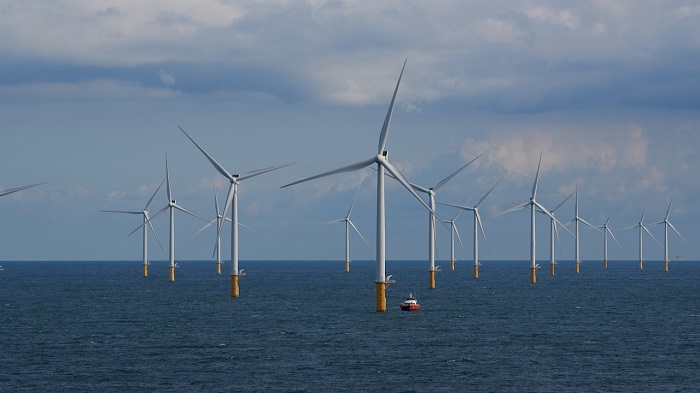The expansion of the offshore wind industry in the United States can in part be attributed to the federal government. By committing to producing 30 GW of sustainable energy from offshore wind farms by 2030, President Joe Biden set the bar high. Additionally, the Biden administration has accelerated offshore wind production by opening up federal seas for development through the Bureau of Ocean Energy Management.
However, according to a recent analysis on the condition of the sector from the National Renewable Energy Laboratory, state-level rules are what are driving the U.S. offshore wind market.
By 2040, eight states have agreed to buy a total of 39,322 MW of offshore wind energy. These objectives allow project developers, such as Aker Offshore Wind’s U.S. operations, the assurance they require to take on projects.
According to Jonah Margulis from Aker in a RENEWABLE +Series webinar, state offtake agreements are important for offshore wind developers. 24 offtake agreements totaling 17,597 MW of offshore wind energy agreements had been inked as of May.
California is the most recent state to offer that assurance. The California Energy Commission adopted a study in August that established planning targets for offshore wind energy of 2,000–5,000 MW by 2030 and 25,000 MW by 2045. The authors of the NREL research stated that these policies offer a pathway to meeting the national offshore wind objective of 30 GW by 2030.
Since May 2021, the amount of offshore wind projects in various phases of development in the United States has increased by 13.5%, from 35,324 MW to 40,083 MW. The expansion is the result of BOEM’s sale of eight new Atlantic lease areas and the declaration of two additional wind energy zones off the coast of California.
An important turning point for the American offshore wind industry occurred in February with the BOEM’s auction of six leases off the shores of New York and New Jersey.
Developers competing to develop the waters paid a record amount of $4.37 billion at the New York Bight auction. The estimated pipeline potential for New York and New Jersey is now greater than 15,915 MW. Two months later, TotalEnergies and Duke Energy contributed $315 million to the Carolina Long Bay auction.
This fall, BOEM is anticipated to hold an auction for five proposed lease locations offshore California, launching the U.S. further into the floating offshore wind market. By 2024, it is anticipated that auctions will be held for the rights to build offshore wind projects in the Central Atlantic, Oregon, Gulf of Maine, and Gulf of Mexico.
The future of offshore wind in the United States is looking up thanks to cost reductions as well.
According to NREL, the levelized cost of energy for fixed-bottom offshore wind projects that were put into service in 2021 was $91 per MWh globally, a decrease of 4% from 2020 and a 50% decrease since 2014. Researchers predict that costs will continue to decline, with an average LCOE of $64/MWh by 2030.
The macroeconomic trends are still positive, but the survey revealed that costs and logistics still provide challenges for developers. The challenges posed by fragmented global supply chains and price inflation for commodities like steel and services like foundations in 2021 and 2022 were mentioned by developers Eversource Energy and Ørsted.
Developer budgets are likely to be squeezed by the skyrocketing lease sale costs seen in the New York Bight auction. According to NREL, the average lease price in the New York Bight is $763/kW, which is equal to 22% of the reported average capital costs for U.S. projects.
Even while the U.S. offshore wind business is expanding quickly, it is still behind other parts of the world. There are now only two 42 MW offshore wind projects operating in the United States.
Off the coast of Rhode Island, Eversource Energy’s Block Island Wind Farm was erected and put into service in 2016. Additionally, a 12-MW, two-turbine test pilot for Dominion Energy’s Coastal Virginia Offshore Wind is in use. After a deployment year that set a record, offshore wind’s total generating capacity topped 50 GW in 2021. The global supply of offshore wind increased by 17,398 MW in 2017 as a result of newly completed projects.
With 13,790 MW, China set the record for the most offshore wind power added in a single year. The following countries in order of annual deployment size were Taiwan (1,855 MW), Vietnam (643 MW), Denmark (604 MW), and the Netherlands (402 MW) (109 MW).





































